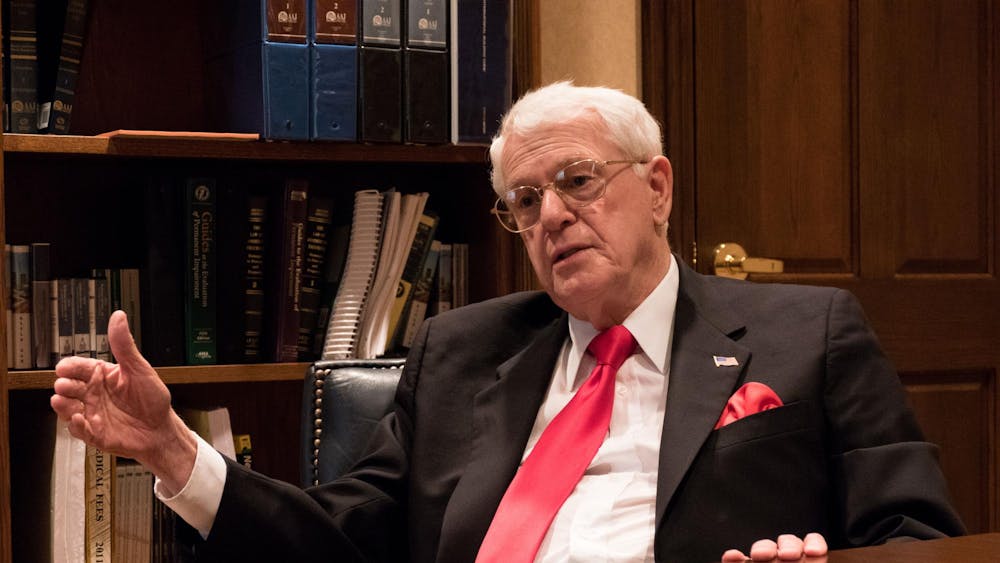This summer, Fairview Elementary School will be demolishing part of its building and constructing a new location for its students in the fall.
Unfortunately, the section included a 90-year-old chimney that has been a popular nesting site for chimney swifts, birds known for making their homes in the tall brick structures.
Member of the Sassafras Audubon Society and former IU professor Bob Dodd said after his group was informed of the building project concerns for the bird arose immediately.
“More and more of the old chimneys are being torn down in Bloomington and around the country,” Dodd said. “The numbers of chimney swifts are at a bit of a decline. That’s why we decided to take action.”
Dodd said the birds are important because they feast on large amounts of mosquitoes and pests.
SAS had a meeting with the school and decided the best solution would be to screen the old structure before the swifts returned and erect another hollow structure where they could nest during the summer months.
Dodd said he was surprised by how supportive Fairview was of the project.
“The school has really embraced the idea,” he said. “The children have learned the history of the swifts and the kids have even drawn them in art class. It’s really been a bit of an educational tool.”
Fairview teacher Jeremy Brown said his class started to study the birds after his colleague, Lee Heffernan, suggested the idea to him.
“Lee is just a master teacher,” Brown said. “When she first presented the idea, everyone was so excited. It was a completely different topic than I would have done on a typical day.”
The class read biographies of environmentalists John James Audubon and Rachel Carson, studied migration patterns of the birds and wrote letters from the point of view of the swifts thanking their school for the nesting site.
“The project really brings the natural world into the classroom,” Brown said. “Kids will go to the park and make that connection of migration and how far the birds traveled.”
There have been several success stories in Indiana dealing with bird conservation in recent years.
According to Dodd, birds such as the peregrine falcon and the bald eagle have been endangered in the area but are now becoming more prominent.
“A few years ago the eagle was on the verge of extinction,” he said. “Now, I can almost guarantee you I can show you an eagle almost any day of the week.”
SAS President Jeff Riegel has partaken in a study involving ecosystems in southern Indiana’s forests for the past five years. He said the biggest concern with animal species is habitat destruction.
Riegel said there has been no significant research on deforestation, specifically logging, in Indiana.
This is a concern because today only a sixth of southern Indiana is forest, whereas 150 years ago it was almost entirely covered.
“We don’t know what logging’s role is,” he said. “We might find out that we should never cut another tree, but maybe it might be we should be cutting more trees. We just don’t know.”
Riegel said he has been surprised how cooperative all the logging companies have been with his extensive demands.
“I cannot tell you how many phone calls I got during the harvesting process,” he said. “They’ve bent over backwards to do what we’ve asked them to do.”
Both Dodd and Riegel said they remain optimistic about the future of Indiana’s forests and wildlife as well as the environmental issues worldwide.
“As more and more people get informed, we will head more in the direction of doing what’s right,” Riegel said.
Bird nesting site in jeopardy
Get stories like this in your inbox
Subscribe





